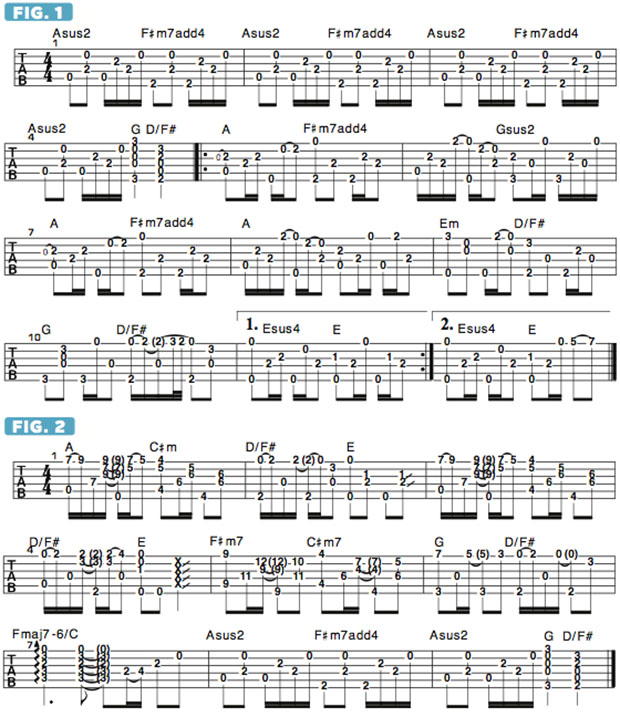Tommy Emmanuel's Guide to Travis Picking Chord-Melody Lines, and How to Play “T.E. Ranch”

In my previous two columns, I demonstrated how I perform the Merle Travis–style picking technique (commonly referred to as Travis picking) and associated fretting techniques on the track “El Vaquero” from my album It’s Never Too Late.
This month, I’d like to focus on how I apply similar techniques to the song “T.E. Ranch” from this same disc.
A significant percentage of my repertory is performed using Travis picking, wherein the bass notes of a chord are sounded on the bottom three strings and always picked in an “alternating bass” fashion with the thumb, and melodic lines are performed on the top three strings and picked with either the index finger, middle finger or both simultaneously. The trickiest part of the technique is attaining rhythmic precision.
Some elements of the melody fall squarely on the downbeats, in sync with the bass notes, and some fall on the upbeats, in the spaces between the bass notes. Clearly defining the song’s melodic line, both rhythmically and in terms of precise articulation, requires close attention to detail, so be sure to work through each bar slowly and carefully.
I got the idea for this tune after watching a documentary about William Cody, also known as Buffalo Bill. Apparently, he had a working ranch in Wyoming called the TE Ranch. When I heard that I thought, He’s given me the perfect song title! However, his TE stood for “trail’s end,” and I hope that’s not an omen for my career!
There’s a lot going on in this tune, and it’s challenging to play and get all the details right. FIGURE 1 illustrates the four-bar intro and eight-bar verse sections. During the intro, and at the beginning of the verse, I alternate between Asus2 and F#m7add4 chords, both of which are essentially fretted the same way; I simply add a “thumbed” low F# bass note to get F#m7add4. A little trick here is that I fret the E and A notes on the D and G strings with my middle and index fingers, respectively, which frees up my ring finger and pinkie to add melodic notes as the song progresses.
In bar 5, I pick the open A and G strings simultaneously then immediately hammer onto the A note on the G string’s second fret with my index finger, followed by a ring-finger hammer-on from the open B string to C# at the second fret. In the next bar, the ring finger is used to pull off from F# to E on the high E string. Remember that the alternating bass figure must be maintained throughout all of these melodic hammer-ons and pull-offs!
FIGURE 2 represents the tune’s chorus, and I begin with my index finger barred across the top four strings at the seventh fret, with hammer-ons and pull-offs performed on the high E string to sound the melody. Again, it’s tricky to get all the notes sounding clean and in proper rhythm. In bars 5–7, I maintain the gist of the melody but change the chord progression, wrapping up with an unusual Fmaj7-6/C, for which the tip of the middle finger frets both the C note on the fifth string and the F on the fourth string at the third fret.
Emmanuel Dexterity February 2016 FIGURE 1
Emmanuel Dexterity February 2016 FIGURE 2

Get The Pick Newsletter
All the latest guitar news, interviews, lessons, reviews, deals and more, direct to your inbox!
Tommy Emmanuel is an Australian guitarist, who's worked as a session player and won awards for his solo recordings. He is one of the finest acoustic players working today. In 2019, MusicRadar named him as one of the 10 best acoustic guitarists in the world.
